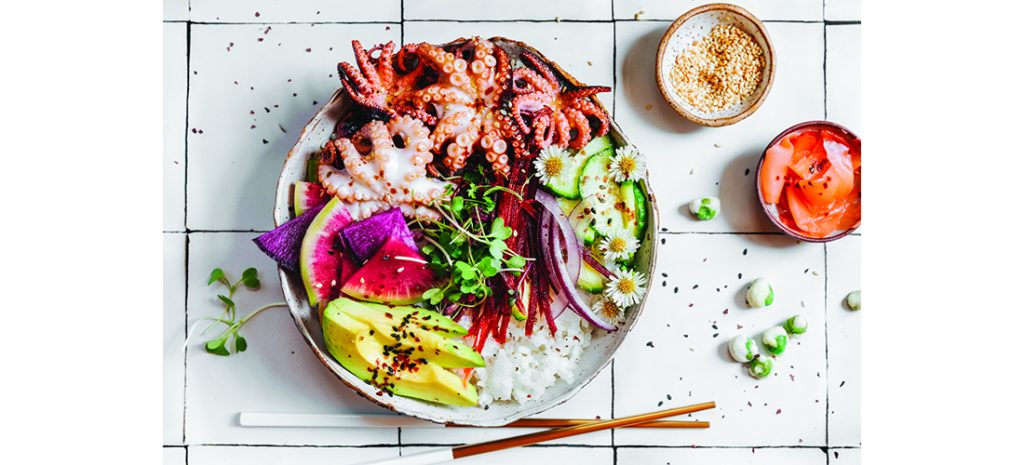Focus on Food

The Best of Both Worlds
Poke takes the mainland
Story and Photograph by Rose Shewey
If you are on the periphery of pop culture, you will likely miss a number of trends, hypes and hashtags. I am fine with the general concept of it. In fact, I am quite comfortable in my state of pop-apathy, unruffled by much of the noise and excitement of mainstream culture. However, it also means I occasionally miss out on something of value. In terms of food, I wish I had paid attention about five years ago when poke bowls rose to fame and conquered the mainland.
Not only was I snoozing on this tasty development but, without giving it much thought, I assumed that poke bowls were of Japanese origin. In my defense, as a native to Central Europe, far removed from any island living, what was I to think of a dish served with sushi rice, raw fish, chopsticks and pickled ginger? (Unsurprisingly, the mainland rendition of poke differs significantly from authentic island poke, but I’ll get to that in a minute). If you, like myself, were off by about 4,000 miles and didn’t know poke is a traditional Hawaiian dish, you’re in good company. I have since learned that, unless you are greeted at the door by aloha signs and grass skirt-wearing waiters, not many people seem to know (or care) where poke comes from as long as it tastes good. And I can get on board with this.
A purist at heart, I’m torn when it comes to straying from tradition; talk about (con)fusion cooking. If the heart of the matter is preserved — which is highly subjective, of course — I’m generally in favor of mixing things up, but please make it an homage to the original, or call it something else. Original Hawaiian poke’s roots go back to when the first Polynesians came to the island. Supposedly, Captain James Cook was served poke during a visit to Hawaii in the late 18th century. Poke literally means “to slice, cut crosswise into pieces.” What is typically served as a simple snack on the island morphed into a wholesome meal on the continent.
To honor tradition as well as to indulge in the playful bowl-culture of our time, making octopus “tako” poke gets you the best of both worlds, without too much of a compromise. Unless you drown your poke in spicy mayo, then you cannot be helped. Octopus, alongside tuna, is one of the classically used poke ingredients; you can do as the islanders do and eat it raw, without sides, or serve it hipsterville-style on a bed of rice with seaweed and avocado. Either way is scrumptious and definitely picture-worthy.
Tako Poke Bowl (Serves 2)
For the bowl
12-16 ounces baby octopus, cooked
3 cups sushi rice, cooked
For the relish
1 medium-size tomato, diced
3 tablespoons shoyu (can substitute soy sauce or tamari)
1 tablespoon sesame oil
1 teaspoon grated ginger
1/2 teaspoon crushed red pepper flakes
1/4 cup chopped green onions
1 tablespoon rice vinegar
1 teaspoon honey
Additional optional toppings: sliced avocado, cucumbers and radishes, sprouts, toasted sesame seeds, julienned carrots, roe, pickled ginger, seaweed flakes or salad.
Cut octopus into bite-sized pieces. In a small bowl, combine ingredients for the relish and mix well. Add octopus, stir once more to combine, cover and chill before serving. To serve, add sushi rice to a bowl, top with tako (octopus) poke and add additional ingredients of your choice. PS
German native Rose Shewey is a food stylist and food photographer. To see more of her work visit her website, suessholz.com.
